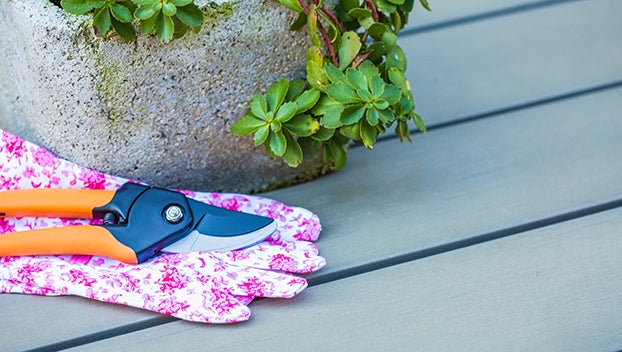MASTER GARDENER — Prune roses in Spring for optimal growth
Published 12:02 am Thursday, February 9, 2023
|
Getting your Trinity Audio player ready...
|
Hey gardeners! Valentine’s day is close at hand…and so is spring!
The weather has moderated a bit and become a little more spring-like and who knows, maybe our final round of cold weather has passed. I wouldn’t bet my plants on it just yet, but most of you (like me) can hardly wait for spring to arrive, we are simply ready.
We have about a month to go before our last anticipated frost date which falls somewhere between the end of February to mid-March. Gardeners now is a great time to focus on pruning roses, which provides for optimal growth while maximizing blooms.
Pruning
Many gardeners fear pruning roses, believing incorrect pruning will damage or kill the plant.
I’m here to let you know it is almost impossible to kill a rose with excessive pruning (though I’ve managed to kill a few through numerous other means —multiple stories for another day) unless it’s cut off level with the ground.
Pruning roses really isn’t as complicated as it seems, though it’s important to prune at the right time for the rose type. Following one simple rule of pruning, most anyone can achieve professional results and grow healthy plants.
Rose canes must be cut at a 45-degree angle, at least ¼ to ½-inch above an outward-facing bud. That’s it! Remember: this is the “Golden rule” for pruning roses and following this rule encourages the rose to grow outward, improving air circulation and sunlight exposure while minimizing damage from crossed canes.
There are numerous rose cultivars which require little if any pruning. For those that do, it is essential to use the correct tools, with safety in mind due the much-dreaded thorns. Using the wrong tools, tools incorrectly or improperly cleaned (tool hygiene) can damage the rose and create other plant health issues.
Equipment
- A long-sleeved shirt or two are must-haves for protection against thorns.
- Safety glasses or goggles are imperative for eye protection (canes don’t always go where intended).
- Clean & sharp by-pass pruners (not anvil style-which crush rather than cut rose canes).
- Lopping shears to remove canes larger than ½” diameter or a cleaned & disinfected pruning saw.
- Isopropyl alcohol (70% assay or greater) to disinfect pruners and loppers.
- Rose pruning gloves or heavy-duty leather gloves.
- Container large enough to hold pruned rose canes (wheelbarrow works best).
* Note: pruning tools must be clean and sharp. Sterilize with alcohol between cuts and plants.
Maintain personal safety by using adequate safety equipment and the right tools for trimming roses makes quick work of the pruning process (courtesy aggie-horticulture.tamu.edu).
Late winter is the best time for major pruning of most rose types, meaning now is the time to don warm clothing, gather necessary pruning equipment and start pruning roses.
A specific pruning date is not necessary (to make it easy to remember, I choose Valentine’s Day-February 14th) as a great time to prune roses. For all roses, begin pruning by removing dead, diseased and damaged canes (they appear brown).
Roses which haven’t been pruned before or not in many years will require extreme and severe pruning. Cut back the previous year’s growth by ¼ to ½ or more, until a healthy, white cane center is revealed on each cane.
Lightly pruning roses during the growing season keeps them well-groomed. A few reblooming varieties require “deadheading,” removing spent flowers to encourage more blooms throughout the growing season. Spent blooms need to be pruned back to the first five-leaflet stem to promote more growth.
Not all rose cultivars develop rose hips once the flowers fade, meaning deadheading is not necessary as the rose will continue blooming without assistance. Blooms simply fall off and the plants will continue blooming.
Pruning by Type
Hybrid and Floribunda
These rose types need to be cleared of diseased and dead canes before they begin to “green up” and begin branching. Late winter or early spring is the time to remove crossed canes, weak and spindly growth. Consider the rose cultivar and its normal growth habit when pruning, cut back old canes by making a 45-degree angled cut to a bud pointing away from the roses center which encourages outward growth.
Primitive (Shrub & Single Blooming)
These are the hardiest roses-often surviving for decades. They initially bloom on the previous years’ canes in the middle of summer. If the rose variety is a reblooming rose, then blooms repeat throughout the growing season.
Remove diseased, broken, and dead canes in early spring, prune lightly after flowering to manage growth, form, and shape the rose.
Climbing Roses
Climbing roses are hardy while most tend to bloom on previous years canes. Do not prune climbing roses until after peak flush of blooms is complete, removing diseased or damaged canes as necessary but yearly pruning should wait until blooming subsides.
Undesirable, spindly, and crossed canes need to be pruned to maintain good air circulation and maximize sunlight penetration throughout its habit. Train new growth to a strong support structure, securing to an arbor, fence or trellis. Remember, side branches flower more heavily than central cane leaders.
John Green is a Certified Texas Master Gardener. If you have gardening questions or need more information, contact the Orange County Master Gardeners Helpline at 409-882-7010 or visit txmg.org/orange, Orange County Texas Master Gardeners Association on Facebook or email extension@co.orange.tx.us.






